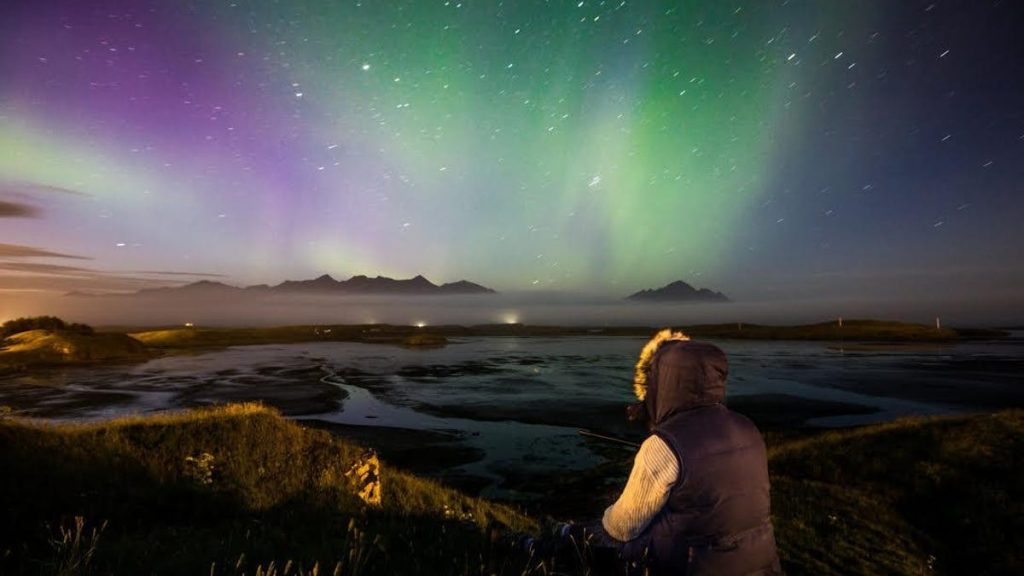A recent geomagnetic storm has created stunning auroras visible in the night sky from San Francisco to Tasmania. This storm is one of the largest in decades and is expected to continue into the upcoming week. The National Oceanic and Atmospheric Administration’s Space Weather Prediction Center has observed at least five Earth-directed coronal mass ejections, which are expected to arrive and persist through the weekend. These ejections are associated with a large and magnetically complex sunspot cluster that is 16 times the diameter of Earth.
While geomagnetic storms typically do not cause major disruptions on Earth, they can impact infrastructure in near-Earth orbit and on the planet’s surface. These storms have the potential to disrupt communications, the electric power grid, navigation, radio, and satellite operations. The operators of these systems have been notified by the Center so they can take protective action. While high-frequency radio users in the aurora viewing zone may experience disruptions, most people will not be affected. Consumer wireless networks are unlikely to be impacted, as wireless carriers generally have backups in place.
In most cases, geomagnetic storms provide unique opportunities to witness spectacular auroras in the night sky. The plasma carried by the storms creates awe-inspiring auroras that illuminate the sky with vibrant colors. Severe geomagnetic storms can impact the power grid, but wireless carriers are equipped to mobilize mobile cellular towers. These storms also offer the chance to witness the auroras as far south as Alabama and Northern California. NOAA has created viewlines for watching the auroras and an aurora forecast that shows the activity of the last 24 hours.
While observing auroras can be a rewarding experience, it requires patience and the right conditions. City dwellers are at a disadvantage due to light pollution, which hinders their ability to see stars and planets in the night sky. Driving to rural areas with no streetlights can improve visibility, but weather conditions can also affect aurora sightings. Many people travel to Alaska or northern countries in the hope of witnessing and photographing auroras. Popular locations for viewing auroras include Anchorage, Fairbanks, Yukon, Helsinki, and northern Scandinavia. Trip planners now organize tours focused on viewing the auroras for enthusiasts.


